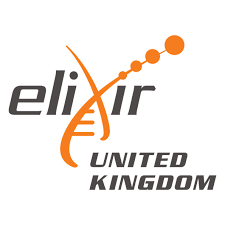GtoPdb is requesting financial support from commercial users. Please see our sustainability page for more information.
|
Synonyms: LU-02030 | MK-0928 | MK0928 | OV101 | THIP
Compound class:
Synthetic organic
Comment: GABAA agonist, with some preference for δ subunit-containing channels [6].
|
|
|||||||||||||||||||||||||||||||||||
| References |
|
1. Bird LM, Ochoa-Lubinoff C, Tan WH, Heimer G, Melmed RD, Rakhit A, Visootsak J, During MJ, Holcroft C, Burdine RD et al.. (2021)
The STARS Phase 2 Study: A Randomized Controlled Trial of Gaboxadol in Angelman Syndrome. Neurology, 96 (7): e1024-e1035. [PMID:33443117] |
|
2. Braat S, Kooy RF. (2015)
Insights into GABAAergic system deficits in fragile X syndrome lead to clinical trials. Neuropharmacology, 88: 48-54. [PMID:25016041] |
|
3. Campbell MM, Mickel SJ, Singh G. (1991)
(±)-2-amino-2-thiazoline-4-ethanoic acid; a novel, specific GABAA receptor agonist. Bioorg Med Chem Lett, 1 (5): 247-148. DOI: 10.1016/S0960-894X(01)81035-0 |
|
4. Cogram P, Deacon RMJ, Warner-Schmidt JL, von Schimmelmann MJ, Abrahams BS, During MJ. (2019)
Gaboxadol Normalizes Behavioral Abnormalities in a Mouse Model of Fragile X Syndrome. Front Behav Neurosci, 13: 141. [PMID:31293404] |
|
5. Copping NA, McTighe SM, Fink KD, Silverman JL. (2021)
Emerging Gene and Small Molecule Therapies for the Neurodevelopmental Disorder Angelman Syndrome. Neurotherapeutics, 18 (3): 1535-1547. [PMID:34528170] |
|
6. Frølund B, Kristiansen U, Brehm L, Hansen AB, Krogsgaard-Larsen P, Falch E. (1995)
Partial GABAA receptor agonists. Synthesis and in vitro pharmacology of a series of nonannulated analogs of 4,5,6,7-tetrahydroisoxazolo[5,4-c]pyridin-3-ol. J Med Chem, 38 (17): 3287-96. [PMID:7650683] |
|
7. Keary C, Bird LM, de Wit MC, Hatti S, Heimer G, Heussler H, Kolevzon A, Mathews A, Ochoa-Lubinoff C, Tan WH et al.. (2023)
Gaboxadol in angelman syndrome: A double-blind, parallel-group, randomized placebo-controlled phase 3 study. Eur J Paediatr Neurol, 47: 6-12. [PMID:37639777] |
|
8. Krehan D, Frølund B, Ebert B, Nielsen B, Krogsgaard-Larsen P, Johnston GA, Chebib M. (2003)
Aza-THIP and related analogues of THIP as GABA C antagonists. Bioorg Med Chem, 11 (23): 4891-6. [PMID:14604650] |
|
9. Larsen M, Holm R, Jensen KG, Brodin B, Nielsen CU. (2009)
Intestinal gaboxadol absorption via PAT1 (SLC36A1): modified absorption in vivo following co-administration of L-tryptophan. Br J Pharmacol, 157 (8): 1380-9. [PMID:19594759] |
|
10. Lozano R, Hare EB, Hagerman RJ. (2014)
Modulation of the GABAergic pathway for the treatment of fragile X syndrome. Neuropsychiatr Dis Treat, 10: 1769-79. [PMID:25258535] |
|
11. Thwaites DT, Anderson CM. (2011)
The SLC36 family of proton-coupled amino acid transporters and their potential role in drug transport. Br J Pharmacol, 164 (7): 1802-16. [PMID:21501141] |






